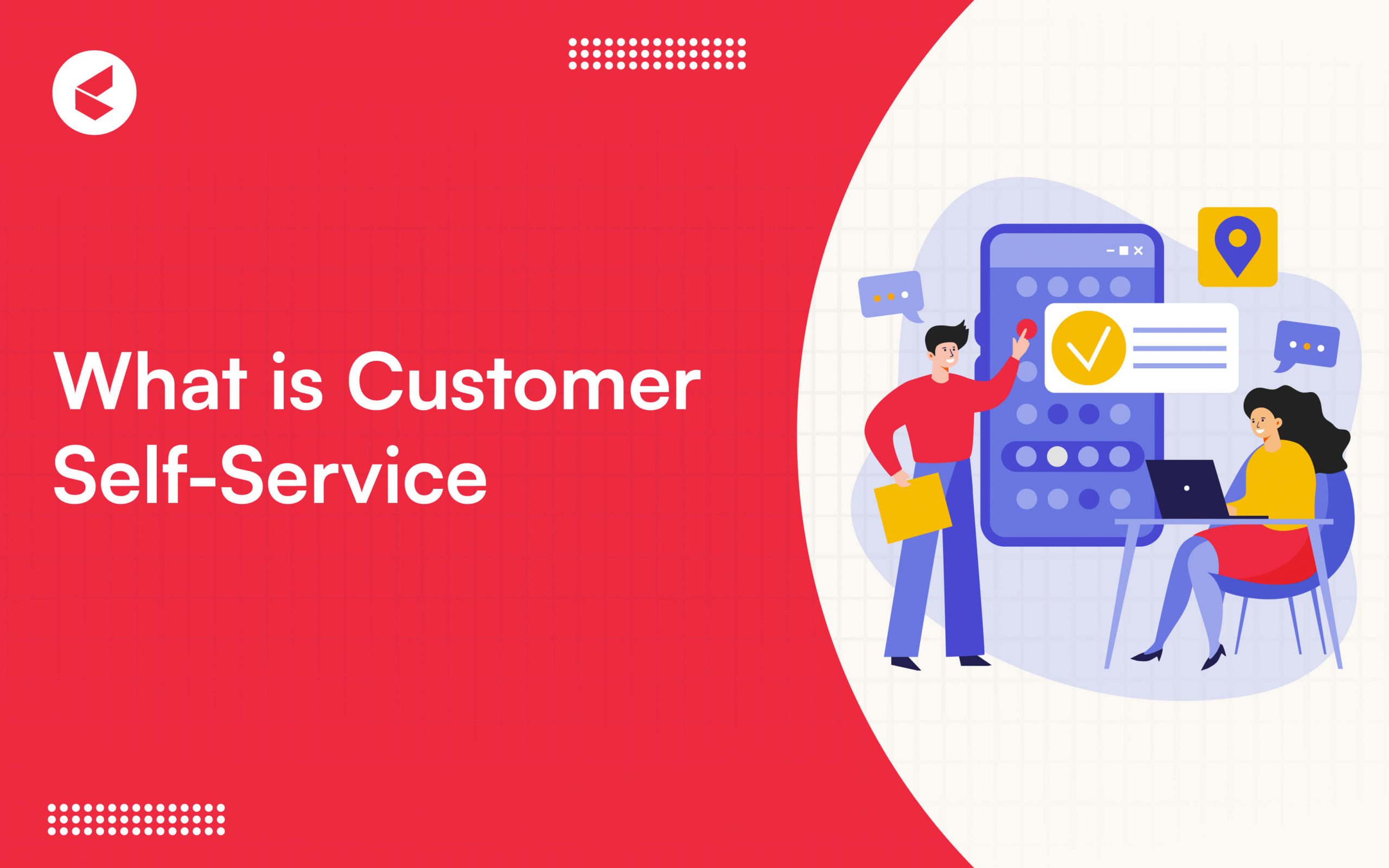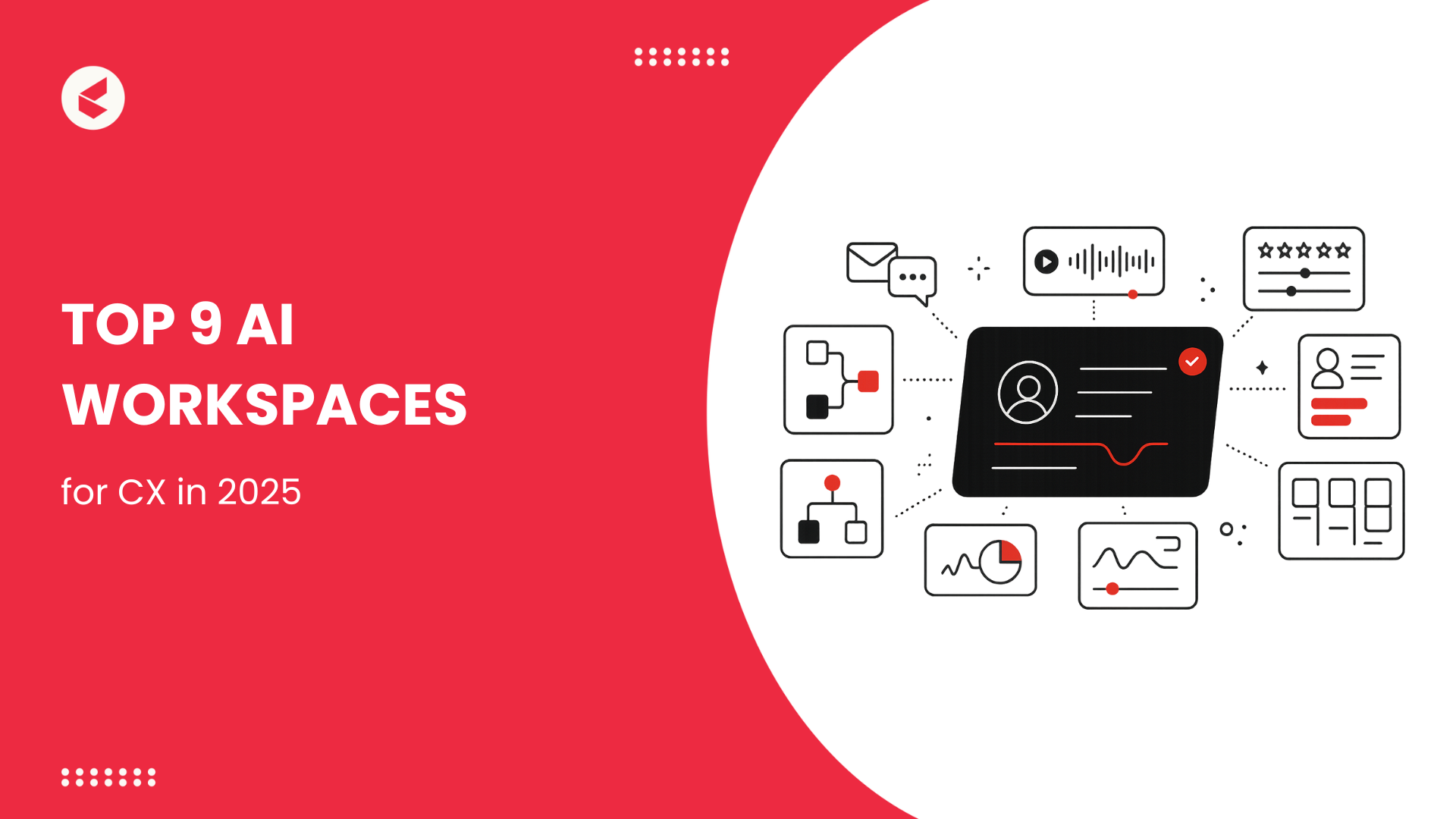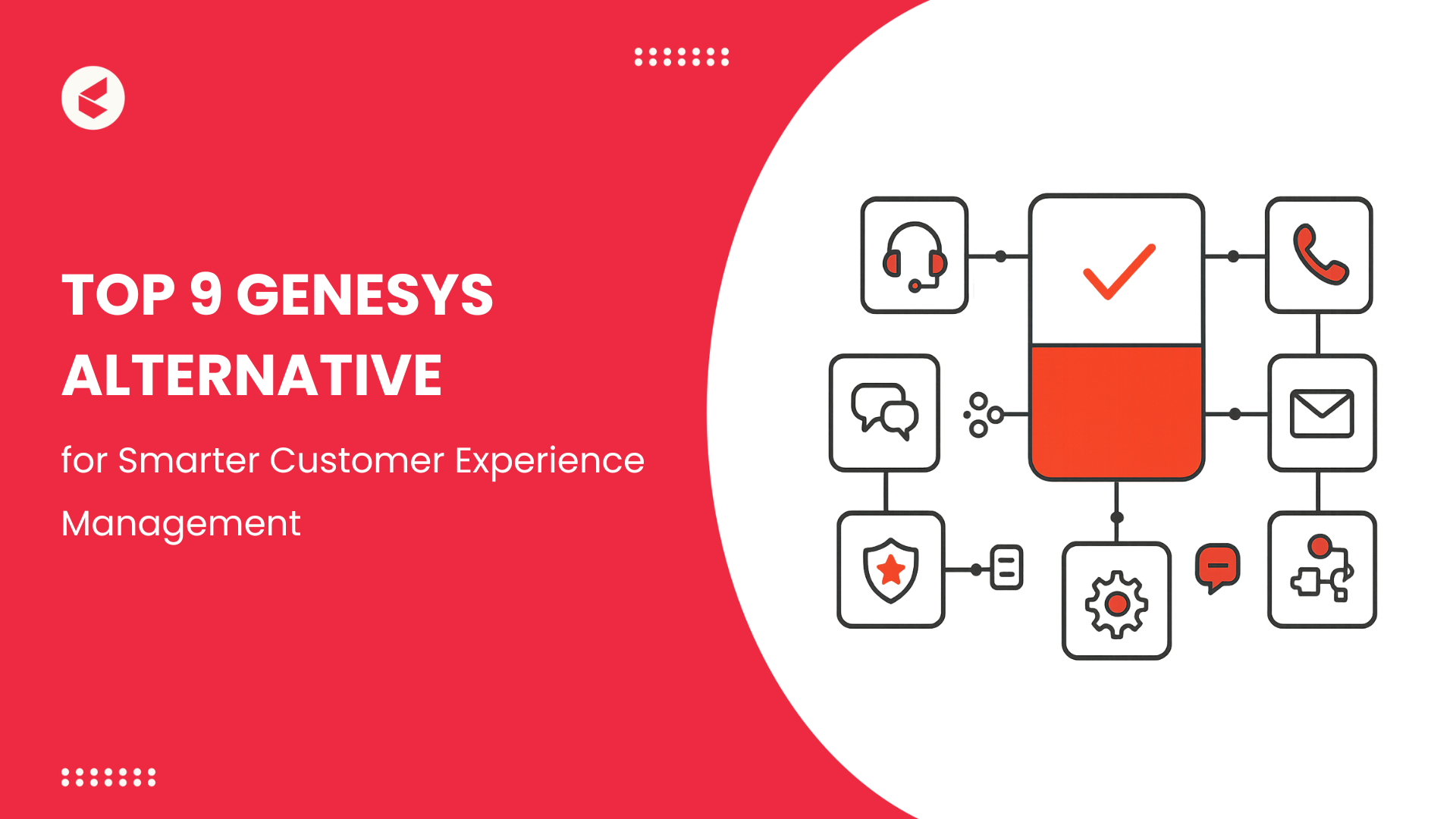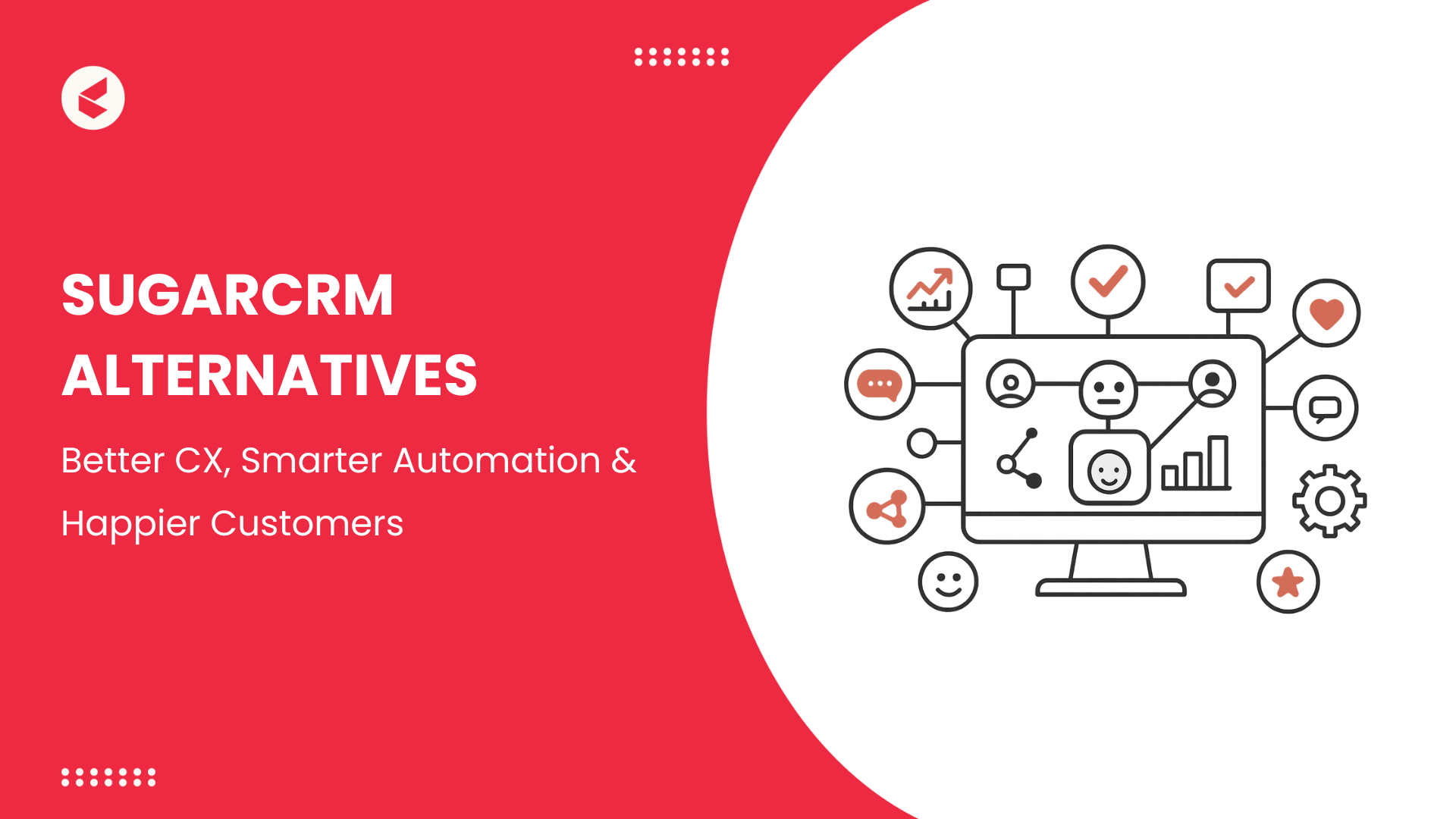Today, customers want speedy fixes without the hassle of waiting for human help.
According to a Gartner report, 73% of customers use self-service at some point in their customer service journey. Why? Because customers can fix issues on their own terms and pace.
It’s not just about customer convenience. Businesses benefit, too. An IBM study reveals that AI self-service solutions slash customer service expenses by 30%. That’s a win-win!
From smart chatbots to potent knowledge bases, self-service solutions are now a must for an excellent customer experience. In this blog, we’ll go deeper into what customer self-service is, its advantages and components, and how your business may successfully utilize it.
What is Customer Self-Service?
Customer self-service is an easy way for customers to resolve issues, find answers, and complete tasks using digital tools and platforms. The best part? They can do it all without needing to call or chat with a company rep.
Nobody enjoys being put on hold. Think about the last time you needed help but didn’t feel like waiting. Self-service pops up with instant solutions through FAQs, help centers, chatbots, and online portals and forums.
Consider the airline industry. Ever used a self-service kiosk to check in and print your boarding pass? With no long lines or fuss, they become quite handy, especially when you are in a rush. Or think about grocery store self-checkouts—customers handle the entire process, and it’s way faster than waiting for a cashier. That’s the power of customer self-service. It’s efficient and available whenever the customers are.
When customers solve problems themselves, it creates smoother and more satisfying experiences. After all, in a world where speed and convenience reign, customer self-service is leading the way.
Customer self-service channels can be categorized into:
- Unauthenticated Self-Service: Public content like FAQs, articles, tutorials, or user guides that anyone can access.
- Authenticated Self-Service: Requires customers to log in for personalized support like tracking orders or accessing loyalty rewards.
Another good example of self-service is Amazon’s help center. Customers can manage orders or returns and adjust their account settings without speaking to a representative. Users find this degree of autonomy practical and time-efficient.
Industries like banking, telecom, and healthcare are also implementing self-service to elevate customer experience. For instance, telecom companies provide self-service portals where users can manage subscriptions and resolve technical problems. This not only saves time but also reduces strain on support teams.
Customer self-service is ultimately about ensuring customers get the help they need anytime, anywhere. By offering a range of resources, your business meets and exceeds modern customer expectations while improving internal efficiency.
Why Do Many Customers Prefer Self-Service?
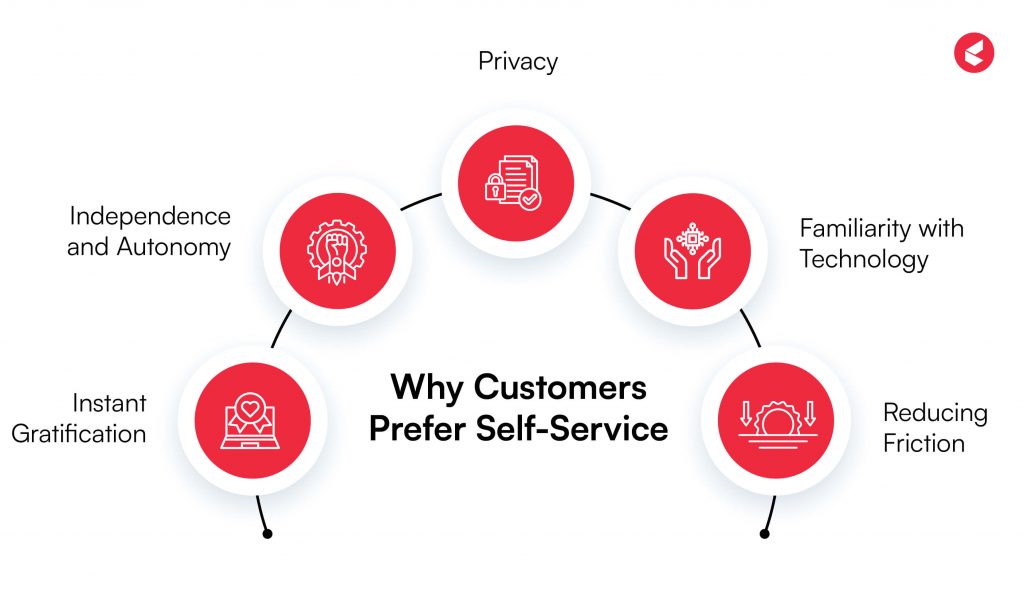
Customers today crave freedom, always-available support, and flexibility—three things that self-service delivers effortlessly. In a world where time is everything, waiting in line for support is no longer acceptable.
Instead, customer self-service puts the power back in customers’ hands and allows them to get the solutions they need without any unnecessary delay.
Here’s why it’s become the go-to option for many:
1. Instant Gratification
When customers need answers, they want them immediately. Mckinsey reveals that approximately 66% of millennial customers expect prompt support when they have an issue.
Self-service eliminates the wait time associated with traditional customer support. No more waiting on hold or in long chat queues—just quick problem-solving.
2. Independence and Autonomy
Self-service appeals to the modern customer’s desire for independence. Many customers enjoy solving issues themselves rather than relying on others.
A 2017 study by Harvard Business Review discovered that 81% of customers attempt to resolve problems independently before requesting human help. It is not wrong to assume that the rise of more intuitive technology has further fueled this shift toward autonomy.
As a result, self-service tools have made it easier than ever to access solutions without outside help.
3. Privacy
Self-service allows customers to handle issues privately. They can update personal information or manage account settings without involving third parties, guaranteeing greater privacy and security.
This is especially appealing in today’s digital age, when data privacy concerns are higher than ever.
4. Familiarity with Technology
Customers are growing more at ease with digital tools as technology becomes more integrated into daily life. They are already used to utilizing delivery services to order food and mobile banking apps to manage their money. Thus, the leap to self-service in customer support feels natural and expected.
5. Reducing Friction
The fewer touchpoints a customer has with your support team, the smoother the experience. Customer self-service reduces friction by eliminating unnecessary steps and simplifying the customer journey.
Benefits of Customer Self-Service
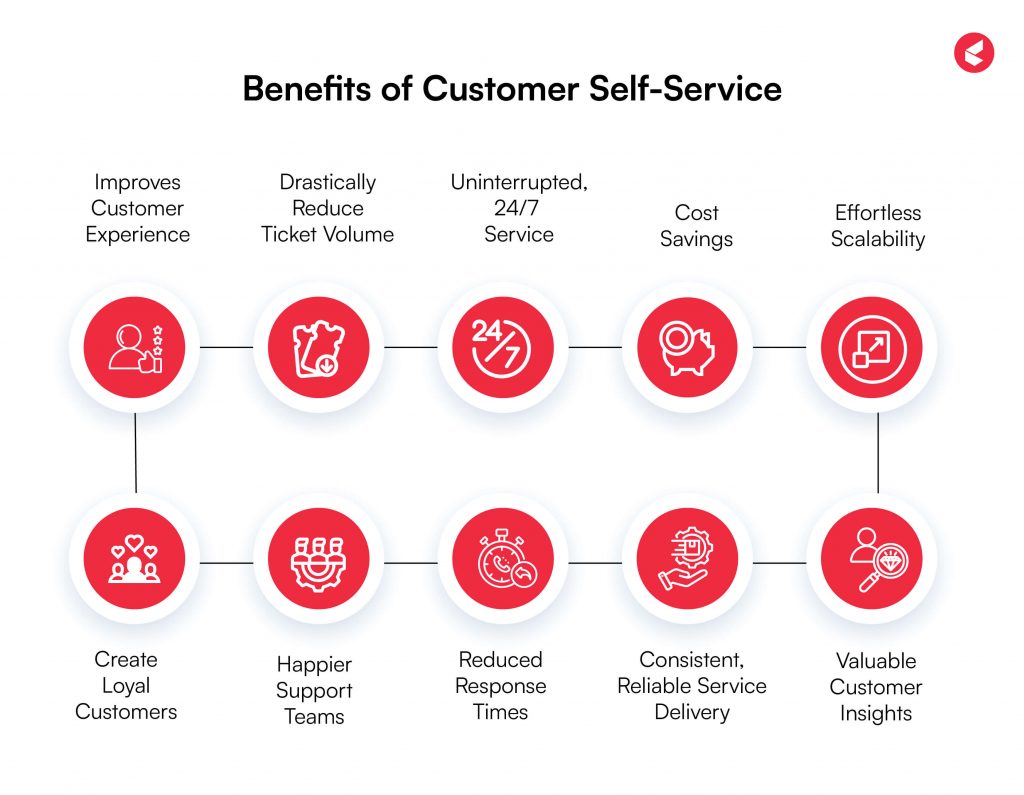
The future of customer service is self-driven. Self-service enables quicker resolutions, lower support expenses, and more individualized experiences, empowering customers and companies. It’s a strategic imperative to fulfill changing demands and keep ahead of the competition.
Here’s why self-service is a game-changer:
1. Improve Customer Experience
Why wait when you can fix it yourself?
Whether troubleshooting a device or updating account details, self-service platforms give customers complete control. They choose when and how to resolve their issues.
Such on-demand autonomy promotes a sense of empowerment, giving customers more confidence in their interactions with your brand. The internal processes also get streamlined and keep things moving, saving both parties time and frustration while delivering a superior customer experience.
2. Drastically Reduce Ticket Volume
Self-service cuts live customer support inquiries in half for businesses. Gartner’s 2020 survey indicated that most service leaders believed around 20 to 40% of live interactions could be handled through self-service solutions.
Businesses can set up automated systems to handle simple questions like ‘Where’s my package?’ or ‘How do I reset my password?’ This frees up your team for more high-value issues that truly require expert attention, resulting in better prioritization and a significant reduction in overall ticket volume.
3. Uninterrupted 24/7 Service
Global businesses can’t afford to sleep. A 24/7 self-service system provides assistance at all hours, irrespective of the customer’s time zone. Whether they seek help at midnight or check a policy while on vacation, customers get instant access to answers whenever they need them.
This is particularly important for industries like travel and healthcare, where customers may need immediate help outside regular business hours. Continuous support ensures customers feel valued, knowing they’re never left waiting for office hours to resume.
4. Massive Cost Savings
Self-service tools don’t just make customers happy—they save your business serious money. Gartner data shows that businesses can save 80 to 100 times more with self-service compared to traditional live customer interactions.
As customers solve their own routine queries, companies need fewer agents, minimizing overhead costs such as salaries, training, and equipment. Plus, customer self-service tools like chatbots can answer thousands of queries simultaneously.
The outcome? A leaner, more cost-effective customer support system that boosts your bottom line while still delivering top-tier service to your users.
5. Scalability Without the Headache
Scaling your customer support shouldn’t be a logistical nightmare. Whether your business is experiencing rapid expansion or seasonal spikes, self-service platforms can easily manage fluctuating customer demand.
If there is a rise in customer queries when a new product is introduced, a strong self-service platform can handle the rush rather than overloading your crew. Additionally, AI-powered chatbots and comprehensive knowledge bases don’t need breaks or shifts. They can manage an infinite number of customer inquiries without requiring additional staff.
Your customers get instant help, and your team remains focused on more critical tasks. It’s the perfect solution for scaling without sacrificing customer satisfaction or operational efficiency.
6. Create Loyal Customers for Life
“We trust you to handle this, and we’re here to make it easy!”
Customers who promptly resolve problems are more likely to remain loyal to your brand. When customers have to spend a lot of effort to get solutions, they are much more likely to jump to another business or brand that provides better customer experiences.
With customer self-service, you reduce that effort to a bare minimum. The consequent ease and trust create loyalty, converting one-time customers into devoted supporters who not only return to your business but also refer it to others.
7. Happier Support Teams
Answering the same questions all day can be exhausting for your support team. With self-service powered by generative AI, repetitive tasks like basic troubleshooting are automated. Agents no longer face redundant questions, leading to a more fulfilling work environment.
When agents are free to focus on meaningful work, they’re more motivated and engaged. McKinsey reports that companies leveraging AI-driven customer care solutions see a 30% to 45% increase in agent productivity.
Happier agents mean more enthusiastic support interactions, which directly translates into more satisfied customers. It’s a cycle of improvement that self-service helps kickstart by taking care of the mundane tasks that drain energy.
8. Reduced Response Times
With self-service, customers receive responses in minutes, not hours. They don’t need to wait for an agent to be available as they have instant access to FAQs, tutorials, articles and troubleshooting guides. This significantly lowers the average time to resolve an issue, improving overall customer experience.
For businesses, faster response times also mean fewer escalations and complaints. Customers appreciate the speed and convenience, and the entire support system functions more efficiently.
9. Consistent, Reliable Service Delivery
Customer self-service minimizes human error from the support equation, offering a consistent experience every time. No matter when or where a customer accesses your self-service tools, they’ll receive the same high-quality support.
Think of a healthcare app where patients can check lab results or schedule appointments online. With no need for manual intervention, the process remains reliable and fast.
Customers get the same level of service day in and day out. By ensuring consistency, self-service strengthens your brand’s reliability and reinforces customer loyalty.
10. Valuable Customer Insights
Self-service doesn’t just help customers—it helps you, too. Every interaction in your self-service system creates valuable insights. If you notice customers frequently searching for a specific troubleshooting guide, it might highlight a recurring problem with your product.
Data of this nature is a goldmine to refine products, address common pain points and update support content. According to Gartner, 84% of leaders in customer service emphasized that analytics and customer data were “very or extremely important” for meeting their company objectives in 2023.
Equipped with analytics, you can determine trends and even predict customer demands, making your business more customer-focused and proactive.
Main Customer Service Channels
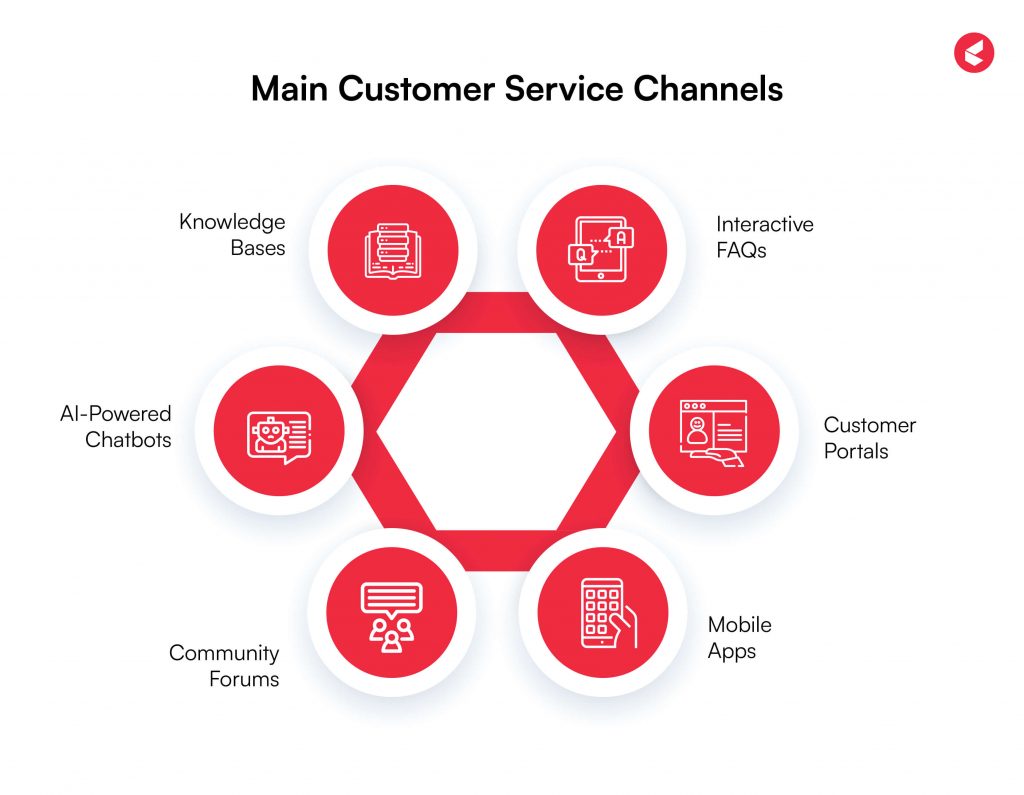
Not all self-service is created equal—your strategy must offer dynamic, intuitive, and accessible tools. The key to delivering an exceptional experience is leveraging multiple customer self-service channels.
Let’s explore the most effective channels to make a difference.
1. Knowledge Bases: Your Digital Encyclopedia
A knowledge base is a virtual library that customers can explore anytime, filled with articles, tutorials, how-to guides, and FAQs.
It provides customers with the information they require at the right moment. The faster they find answers, the better their experience. When designed with search functionality and clear categorization, they can drastically reduce customer queries.
For instance, customers may access detailed product assembly guides, FAQs on returns, helpful DIY videos, and more from any device using IKEA’s knowledge hub.
2. AI-Powered Chatbots: Instant Assistance
AI chatbots are your 24/7 virtual assistants. They provide real-time answers to queries, make recommendations, and guide users step-by-step through problems. Their importance is rapidly growing—Gartner predicts that by 2027, around 25% of organizations will use chatbots as their main customer service channel.
Another reason businesses prefer AI chatbots is the immense expenses they save. Juniper Research estimates that by 2025, chatbots will help businesses save over $11 billion annually.
Chatbots also learn over time, improving the quality of responses.
Amtrak’s “Julie”, for example, is a virtual assistant that helps users book train tickets, check schedules, and offers quick support even outside of business hours.
3. Community Forums: Crowdsourced Wisdom
Community forums empower users to solve issues collectively. These platforms allow customers to engage, share solutions, and learn from each other’s experiences, providing authentic and real-world advice.
They are particularly valuable for tech-driven industries where user feedback can lead to innovative solutions. Businesses benefit by gaining customer insights and reducing support tickets.
The perfect example is Adobe’s creative community, which lets designers, developers, and artists discuss challenges and solve technical issues. It acts as a treasure trove of user-generated solutions, relieving pressure on Adobe’s support team.
4. Mobile Apps: Self-Service on the Go
According to eMarketer, users spend nearly 88% of their mobile usage time on apps. This makes it quite apparent that businesses need to offer mobile self-service solutions in the form of apps. These give customers access to account management, service requests, and troubleshooting features—all at their fingertips.
The Delta Airlines app, for instance, allows users to check in, track baggage, change seats, rebook missed flights, or view flight status instantly. This minimizes support calls and provides a smooth flying experience.
5. Customer Portals: Tailored Experiences
Customer portals are the backbone of self-service. They give users full control over their interactions with a business. From checking billing details and accessing account information to downloading materials and creating service requests, customers receive a tailored experience.
A good example of this is FedEx’s customer portal. It provides a one-stop solution where customers can schedule deliveries, pay invoices, track shipments, and manage account details -all through one interface. This convenience keeps customers happy and saves FedEx from repetitive inquiries.
6. Interactive FAQs: Quick Answers with Depth
Gone are the days of static FAQ pages. Modern FAQs are interactive, feature-rich, and easily searchable. They allow customers to quickly find answers without scrolling through endless content.
By incorporating a smart search bar, you can make sure customers get precisely what they’re looking for without requesting assistance.
Take Netflix’s FAQ page, which doesn’t just list questions—it offers dynamic search filters and suggestions based on user input. Customers can then find answers quickly on streaming issues, account management, or device compatibility without sifting through unrelated content.
Best Practices for Implementing Self-Service
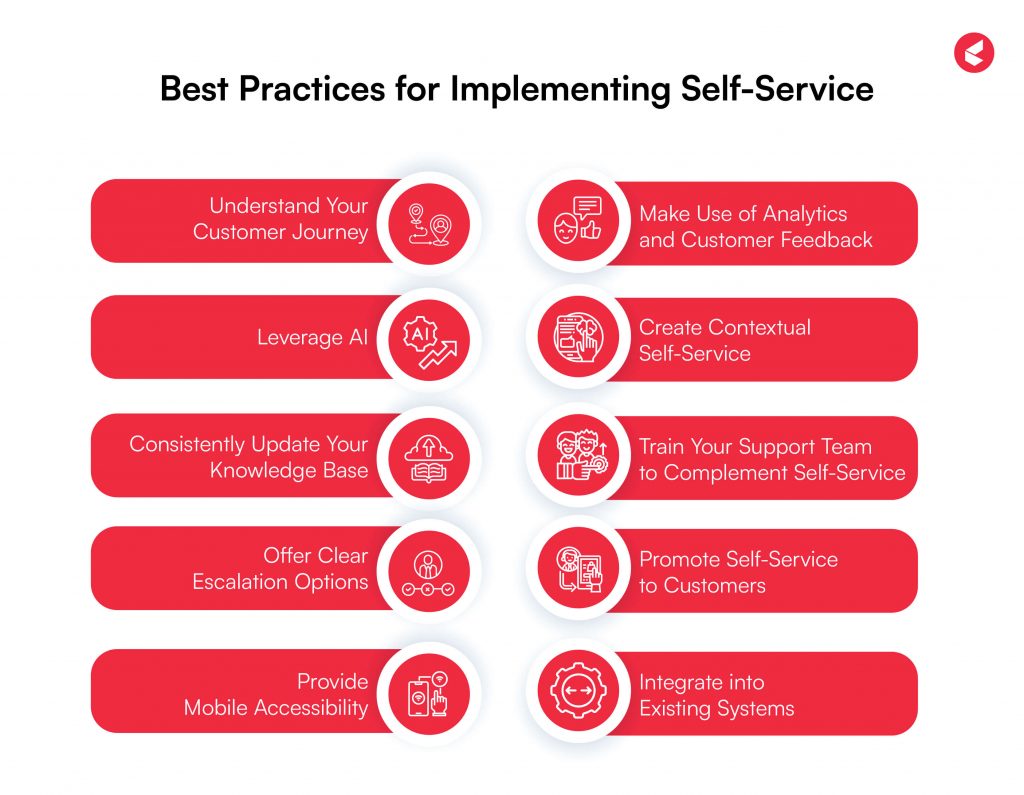
Effective self-service implementation is essential to increase customer satisfaction and minimize support expenses. To ensure success, you need a well-structured approach that evolves with technological advancements.
Below are some best practices to help you craft a top-notch self-service experience for your customers. As more and more businesses turn to self-service options, companies that implement these best practices will stand out for their efficiency and customer-centric approach.
1. Understand Your Customer Journey
Before implementing any self-service solution, deeply understand your customers’ interactions with your product or service. Map out their journey to identify common pain points and repetitive queries:
- Customer Touchpoints: Understand where customers interact most. Are they reaching out via mobile apps, social media, or websites? Focus on building an outstanding experience across these channels.
- Customer Needs: Find out the channels that customers most prefer for support. Segment issues into categories—FAQs, chatbots, troubleshooting guides, or in-depth help articles—to offer relevant solutions.
2. Leverage AI
AI plays a vital role in making self-service more intelligent and efficient. It can predict customer needs, auto-suggest articles, and even provide personalized content by learning from previous interactions or analyzing browsing trends.
By 2025, Gartner estimates that 80% of customer service teams will leverage generative AI in various ways to augment customer experience and agent productivity.
Thus, to remain competitive, incorporate AI chatbots, natural language processing (NLP), and predictive analytics into your customer support. NLP in search bars understands context and ensures customers find accurate and relevant answers even with vague or misphrased questions.
3. Consistently Update Your Knowledge Base
The effectiveness of a knowledge base depends on the quality and relevance of the information it holds. Keeping content up-to-date reduces customer frustrations and contributes to better task completion rates:
- Routine Updates: Self-service content should never be static. Regularly refresh content to match new product features and updated processes.
- Monitor Performance: Use analytics to track which articles or tutorials are performing well and which need revisions. An underused article could mean it’s difficult to find or no longer relevant.
4. Offer Clear Escalation Options
Even the best self-service systems need a backup plan. Always provide users with an easy option to escalate their issue to a live agent when needed.
- Bailout Options: Add a clear ‘Contact Us’ button or link in your self-service portal to connect with a representative via live chat, phone, or email. This ensures customers receive necessary help with minimal effort if the self-service fails to resolve an issue.
- Multichannel support: Offering a consistent experience across different communication channels builds trust and ensures that complex issues are quickly addressed.
5. Provide Mobile Accessibility
To address the demands of an expanding mobile-centric market, self-service solutions must be mobile-compatible.
- Responsive Design: Make sure your knowledge bases and self-service portals are responsive to mobile devices. This guarantees simple navigation on tablets and smartphones.
- Mobile AI Integration: Use AI chatbots that are easily accessible through mobile platforms to assist users on the go.
6. Make Use of Analytics and Customer Feedback
To gauge the performance of your self-service solutions, collect customer feedback and monitor data regularly.
- Self-Service Metrics: Monitor key performance indicators (KPIs) like customer effort score (CES) and customer satisfaction score (CSAT). These metrics help evaluate the efficacy of your self-service tools.
- Customer Feedback Loops: Actively solicit customer feedback on self-service experiences through surveys or direct comments. Use this data to determine bottlenecks in your self-service system and make necessary improvements.
Pro Tip: Set KPIs (Key Performance Indicators) that include user experience metrics and operational efficiencies like call deflection and response times.
7. Create Contextual Self-Service
Not all customers are the same, and neither are their needs. First-time users might need detailed tutorials, while returning customers may benefit from advanced troubleshooting guides.
The most effective self-service tools are tailored to the context of the user’s experience. Contextual self-service means anticipating customer needs based on where they are in the product or service journey:
- In-App Guidance: Use pop-ups or tooltips to guide users through complex features.
- Smart FAQs: Present users with relevant FAQs based on their current activity within your platform.
8. Train Your Support Team to Complement Self-Service
Rather than viewing self-service as a replacement for human agents, train your team to work alongside it.
- Self-Service monitoring: Agents should monitor self-service interactions to spot trends, recurring issues, or knowledge gaps.
- Assisting Escalations: Train agents to handle escalated requests efficiently and ensure that the transition from self-service to live assistance is effortless.
9. Promote Self-Service to Customers
Even the best self-service portal is useless if customers don’t know it exists. Proactively promote your self-service options through email campaigns, in-app notifications, and during onboarding processes. Offer in-product prompts to encourage users to help themselves with common tasks.
The more your customers are aware of self-service features, the more likely they are to resolve issues independently. Thus, you will significantly reduce the load on your support teams.
10. Integrate into Existing Systems
Self-service should not operate in isolation. It needs to be integrated with existing CRM tools, customer service platforms, and ticketing systems to create a seamless user experience. Start by syncing self-service data with CRM to allow agents to access interaction history. You should also use analytics to track customer behavior across self-service and live support channels.
Integrating self-service into your broader ecosystem enables easy handoffs between automated systems and human agents, guaranteeing customers always receive the support they need.
Wrapping Up!
To retain and grow your customer base, delivering exceptional customer service is a must. A well-structured self-service solution helps you with just that. It is your answer to achieving high customer satisfaction while reducing operational burdens.
If you need expert guidance, Kapture CX is here to help. Kapture’s Self-Serve solution combines advanced features like multilingual support, real-time query analysis, AI knowledge base, natural language understanding, and more.
With Kapture, customers receive relevant answers, agents stay focused on high-priority issues, and you gain actionable insights to optimize your services continuously.
Why Choose Kapture?
Kapture Self-Serve Offers:
- AI-Powered Bots: Kapture’s bots deliver instant and accurate responses, understand customer needs, and adapt to unique requirements. They make self-service accessible and convenient for customers.
- Effortless Multi-Channel Support: Provide seamless experiences across apps, websites, social media, and voice channels.
- Enhanced Customer Insights: Track and analyze customer behavior and preferences for more personalized support.
- Industry-Specific Customization: Built to align with your industry’s needs for a more relatable customer experience.
Ready to Elevate Customer Self-Service?
Bring Kapture’s expertise into your customer journey for better support and happier customers. Contact us to start transforming your customer service with intelligent self-serve solutions!
